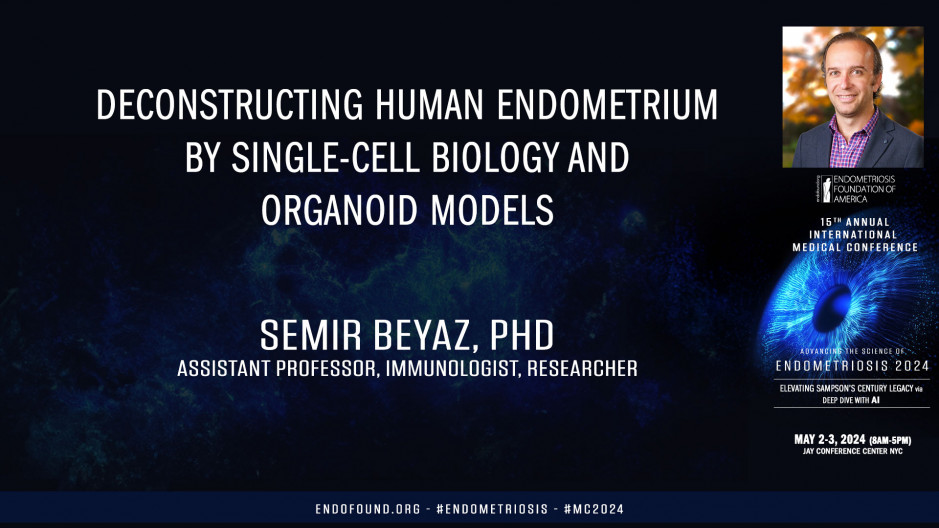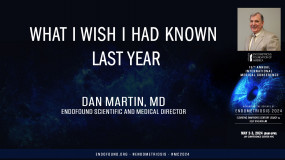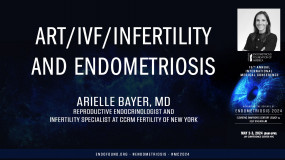International Medical Conference
Endometriosis 2024:
Elevating Sampson’s Century Legacy via
Deep Dive with AI
For the benefit of Endometriosis Foundation of America (EndoFound)
May 2-3, 2024 - JAY CENTER (Paris Room) - NYC
Today, very exciting. Endometriosis get together again in my lab. We are trying to understand human endometrium by using single cell genomics and we develop organ like structures to also develop model systems where we can study how a healthy endometrial functions and also what happens when there is a disease. And the reason that the emphasis that I will highlight here today on human understanding, human endometrium is because human uterus is not mouse uterus. So I'm a basic scientist. We do a lot of things in a reductionist setting, but when it comes to the biology of endometrium, biology of uterus, we really need human models. And so with that in mind, we have been developing reductionist and clinically relevant models to understand the biology of endometrium. And this is something that just to highlight anatomical differences between mouse and human setting. And we can cure many diseases in mice.
My lab studies cancer. But in order to cure a pathology that's very unique to human biology, we need to use human systems. So with that in mind, we created a network of scientists in greater New York area to be able to generate a Rosetta Stone, a map for human endometrium. And that has an emphasis for patients across diverse ancestries because most of the genomics data in humans exist from unfortunately one or two dominant, a like European ancestry. And so we put together a team of clinicians, community engagement specialists, clinical researchers and computational biologists, and received the human opus grant from Chance Berg Initiative to make a Rosetta stone of endometrium. So this is preliminary results from the initial cohort of patients that we were able to profile. So these patients specimens are analyzed one cell at a time to make up a dictionary of endometrial cell types.
And so endometrium undergoes several different physiological processes during different stages of a woman's lifespan. And so that creates a lot of heterogeneity. We try to put that variable in our studies, but we need hundreds and hundreds of samples to be able to uncouple what are the cell states in particular stage of the menstrual cycle versus premenopausal postmenopausal setting. So I highlighted some of the major cell types that are shared in our cohort and also in the other data sets that are out there. And then when we look at the chromatin accessibility, meaning that the epigenetic state of the cell that dictates the overall, sorry, that dictates the overall gene expression program, we can see different composition of cells across diverse demographics. And one thing that's striking in this map that we are generating is depending on the type of the patient, you see diversity of the cells that are represented.
Some of them probably are biological, some of them are also driven by various other factors. But what this really helps us is to define also factors that determine the functional states of the cells. And these are called transcription factors. So some of these things are known from the past work and most of the things are actually unknown. So by generating this catalog, we are now able to zoom in into individual cell subsets within human endometrium and understand what are the key determinants of the functional cell state. And for a disease like endometriosis, it starts in a cell like that. It starts within a cell or cell network within the endometrium, and then things go wrong. So before we understand how and why and what order of events things are going wrong, it's important to understand what are the drivers of the normal developmental programs. And so the normal biology is important to understand the disease and endometrium has a lot of concerning disease states.
Endometriosis is one of them. It's a very common one. But another disease that I want to discuss today with you that also requires a lot of attention is endometrial cancer. It's increasing in both incidence and mortality. You can see here it's right now the number one cancer type. It's surpassed ovarian cancer and other cancer types and it's rate of mortality. So it's killing and its rate of killing is increasing every year. And its incidence is also increasing. So we developed a comprehensive biobank of patients with normal looking endometrium and across the spectrum of endometrial cancer pathology. So we have more than 300 patients in our biobank, and we have created another consortium to look at that problem from the most comprehensive way. We have done whole genome sequencing of most of our patients from diverse ries. This is also very important because there are significant healthcare disparities when it comes to endometrial cancer incidents and mortality and response to therapy where African-American women suffer disproportionately worse compared to other ancestry.
So we develop this whole genome sequencing map here. I'm just showing you what it looks like. We see common drivers like P 53 and R one A them, but there are also unique genetic mutations that we can define from our cohort to understand functionally how these things may influencing the disease itself. We develop organoids from normal matched normal and also different subtypes of endometrial cancer, including the rare subtypes that are not very easy to come by. And one of these rare subsets is called carc sarcoma. So carc sarcoma is an important disease for me to highlight for endometriosis crowd because it is actually similar in nature. It is a cancer type that harbors both carcinoma, which means normal epi like any epithelial cell that has gone towards oncogenic transformation and a sarcoma, which means like a mesenchymal cell that has undergone oncogenic transformation and hence the name carcinoma sarcoma.
And so we wanted to study this disease because it is the one of the most deadly types of endometrial cancer. It has this biphasic nature, so kind of schizophrenic nature, and also it's very rare in European ancestry, but much more common and deadly in African ancestry. So to do that, we have done a genomics and single cell genomics approach where we collected specimens from patients across diverse ancestries. And as you can see, majority of our patients are from African ancestry. And then we have done single cell analysis to define cellular heterogeneity. And here you can see that the cellular heterogeneity of carcin sarcoma is remarkable both within the patient. The cancer is very heterogeneous. It has mesenchymal like cells, epithelial like cells and cancer stem cells. So you can see here these are across patients and these are the markers. And so to read this is if it's more red, it means more present for particular gene.
And if it's blue it means less. And the fact that you see a mix of blue and red is telling you that it's not homogeneous, it's heterogeneous. And then here you can see the distribution of expression within the patient. So there is high degree of heterogeneity. And when it comes to cancer, high degree of heterogeneity is bad for the patient because when you're trying to treat the disease with chemotherapy, radiotherapy, or other targeted therapies, there is a lot of room for this cancer to escape because it has a lot of heterogeneity. And so this is a big problem. And so we are not trying to figure out can we define new targets by using the gene expression data sets and the genetic data sets and the organized. So we took advantage of our normal and disease gene expression programs to define cancer specific pathways and targets.
And we found some interesting ones at listed here, some transcription factors such as re pathway and its frank targetable transcription factors are selectively enriched in carc sarcoma and also some metabolic pathways. So we are now doing experiments to show that these are potentially interesting targets that can provide a therapeutic advantage. And so we have done the organoid models, we have expanded these models, and we are part of an NCI driven National Cancer Institute driven consortium. To generalize these models, we give it to other cancer researchers. And so these models hopefully will be very soon available to the general cancer community. They will be distributed by A TCC. So my lab contributed 15 of these models that are highly well characterized with great qc. So our hope to generalize these models and more people can use them to discover targets and help the patients who are suffering from this disease.
And so we can expand this long term, do genomics. In this case, we didn't do whole genome, we did exome sequencing to show that there's high concordance between the primary tissue sample and the organoid here, what I'm showing you, this cellular heterogeneity that I showed in patients are also seen within the organoid. So we can have both the epithelial epithelial mesenchymal transition and mesenchymal cell states and more robustly. This is something that tells the fidelity of our model. When we compare the cancer cells in the patient tissue to the cancer cells within the organoid using single cell genomics, we can estimate how similar they are. So some of our models are very high fidelity. They look very similar to the patient cancer cells. Some of them are less, but still there is good correlation. And so here you can see this is a very nice high fidelity model.
This is not so nice, but it's at least much better than sticking some cancer cells on a plastic dish and studying the cancers ability to grow on a plastic dish in the context of treating that disease. So it's not perfect, but it's better than the current gold standard. And so in the final few minutes, I will highlight how now we are applying this information that we learned from studying cancer and normal into endometriosis. So as I shown you, we are really capable of growing organoids over long time, making them high fidelity. So we wanted to model endometriosis on a dish by changing the microenvironment of the cells that we grow on a dish. And here we change the extracellular matrix. And as you can see, even by the appearance as the changes in expressive matrix and growth conditions, you can make these cells look like more migratory and more invasive.
And when you do gene expression profiling, you can see some genes that are involved in inflammation and migration and telling us that maybe these cells are starting to behave like endometriosis. Of course, it's not real true endometrioid lesion, but when we do single cell analysis, we can see several cell states that look similar to the ones that are defined within endometriosis. And so this is very exciting for us because we can compare these different cell states in different growth conditions and potentially that will now open new avenues for us where we can test small molecule drugs or other type of epithelial intrinsic or tissue intrinsic factors. It's not capable for us to target neurons and fibroblasts and other crucial mediators of endometriosis, but at least it's a good start. And we've been trying to collaborate with other leaders in that field with us. We have tried to figure out how we can incorporate STR in this condition.
We are very interested in metabolism and how me metabolic factors are involved in that process. So this is a good start, but it's definitely just the beginning of the journey. And so when we look at comparing the gene expression programs, we see a lot of genes that are involved in inflammation or inflammatory processes of endometrium, including endometriosis. And with that, I would love to thank the fearless team members who have been doing this amazing work. I'm very fortunate to have them in my lab and also wonderful collaborators that I have both at Fall, spring Harbor and in other places, especially at Northwell. And been very fortunate to be part of the Endometriosis Foundation family. I met Dr. Kin last year and I attended the endometriosis medical conference and that facilitated a lot of collaborations within that field. And we can only solve that puzzle by working together and collaborating. And I'm very happy to be here and happy to answer any questions that you may have.
Any discussion.
Is it is? I'm done with the thing. And then we'll do discussion maker, right? Okay, cool.










